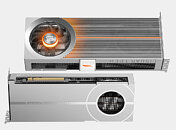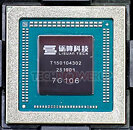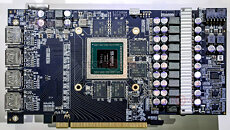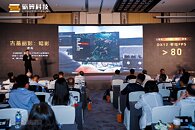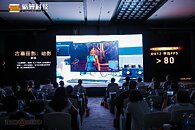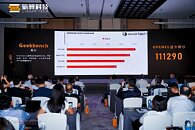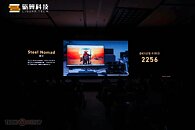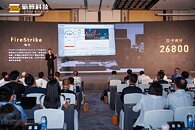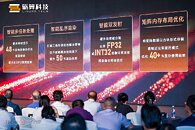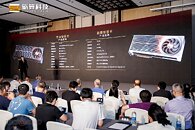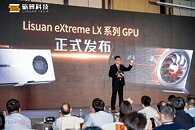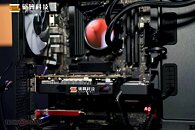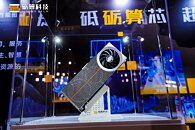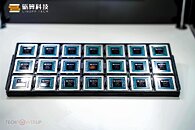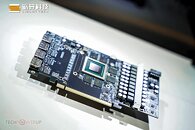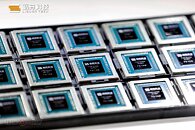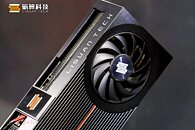Presenting the new 7G106 gaming GPU. Its creator, Lisuan Tech, is a Chinese deep-tech startup that set out to develop their own gaming chip with the potential to grab a large slice of the PC gaming graphics market, beginning with China. The Chinese gaming industry is built on the philosophy of interesting and engaging gameplay without trying to wow the audience with cutting-edge visual effects; which means it’s trying to target the largest possible install-base with mainstream GPUs. The new Lisuan Tech 7G106 is designed to be a locally designed and familiar GPU that gamers can reach out to, without getting entangled in the pricing mess of established brands.
The Lisuan Tech 7G106 is based on the company’s own TrueGPU graphics architecture. “7G”—pronounced similarly to “miracle” in Chinese—reflects the team’s ambition behind the GPU and the challenges they had to overcome. The 7G106 graphics processor is based on a monolithic die that’s built using the TSMC N6 (6 nm DUV) foundry node. It is a contemporary gaming GPU designed to accelerate games and 3D applications with wide API support: DirectX 12, Vulkan 1.3, and OpenGL 4.6. While DirectX 12 is included, ray tracing is not available, meaning there is no DirectX 12 Ultimate. The 7G106 comes with a feature-packed SIMD engine that is able to run calculations with FP32, and the new INT8 data type. The GPU has a maximum throughput of 24 TFLOP/s (FP32). The main compute language is OpenCL 3.0.
Internally, the SIMD engine is backed by a rather large raster graphics pipeline, with up to 192 TMUs, and 96 ROPs present on the silicon. In terms of memory, you get 12 GB of GDDR6 memory across a 192-bit wide memory bus, although the company hasn’t finalized the exact memory frequencies yet. The 7G106 is equipped with a modern video acceleration engine, capable of hardware-accelerated AV1 and HEVC decoding at resolutions as high as 8K at 60 FPS. It also supports hardware-accelerated AV1 encoding at 4K at 30 FPS and HEVC encoding at 8K at 30 FPS. In terms of monitor connectivity, you get four DisplayPort 1.4 outputs with support for DSC 1.2b, the GPU doesn’t feature HDMI outputs, probably due to the license cost that the HDMI Consortium wants for each installed HDMI port. The GPU communicates with the rest of the PC over a PCI-Express 4.0 x16 host interface.
As for power, Lisuan Tech hasn’t put out the GPU’s power figures, because it is yet to decide on final clock speeds for engine and memory. While the exact power specs aren’t available, renders of the reference-design 7G106 are shown with a single 8-pin PCIe power connector, which enables a maximum power delivery capability of 225 W (150 W from the connector, 75 W from the slot). At today’s event we also spotted a variant with a 16-pin power connector, which of course is able to provide much more power than a single 8-pin.
An interesting aspect of the Lisuan Tech 7G106 is its Virtual GPU feature. It is a fully-featured single-root I/O virtualization (SR-IOV) component, with up to 16 containers, which lets you share the GPU to virtual machines running on the same system, so that it can be used in containerized enterprise environments and hyperscalers.
At its launch event earlier today, Lisuan Tech showed off the real-world capabilities of the 7G106. The chip was shown playing “Black Myth Wukong” at 4K Ultra HD resolution with High settings, where it produced playable framerates. In 3DMark Fire Strike, it scored 26,800 points. Lastly, Lisuan Tech showcased a video of the 7G106 making it decode an 8K 60 FPS video on an 8K 60 Hz display that supports DSC 1.2b. The GPU also scored 111290 points in Geekbench 6.4.0 OpenCL benchmark.
At this time, Lisuan Tech does not have any information on upcoming SKUs or pricing, it’s just too early. They received their A0 chip on May 24th, which is the first iteration of a semiconductor used for initial testing, so there’s much work ahead. We’ll keep you updated.
Below, some photos from today’s launch even in Shanghai

